Andaman And Nicobar Tour Packages
Andaman And Nicobar Family Tour Packages
Andaman Water Sports Tour Package
Andaman And Nicobar Honeymoon Tour Packages
Andaman Budget Tour Package
Discover the Magic of Andaman and Nicobar in Monsoon: A Guide to Rainy Adventures
The Andaman and Nicobar Islands are famous for their beautiful beaches, colorful coral reefs, and green rainforests. They are a great place to visit any time of the year. But during the rainy season, which is usually from May to September, the islands have a special kind of beauty. Many people don’t go there when it rains, and they miss the amazing changes and colors that happen during that time. Visiting the Andaman and Nicobar Islands during the rainy season is like seeing nature at its best! You’ll find lots of green plants, big fluffy clouds, and not too many people around. This time of year is great for discovering local traditions, relaxing on quiet beaches, and going on exciting adventures. So, if you’re thinking about having an adventure when it’s rainy, let’s explore the amazing things you can find in the Andaman and Nicobar in monsoon!
Book here Andaman and Nicobar tour packages.
Pros and Cons of Visiting Andaman and Nicobar in Monsoon
1. Pros:
1. Lush Greenery and Scenic Beauty: The monsoon season brings abundant rainfall, transforming the islands into a lush, green paradise. The landscapes are vibrant, with dense forests, sparkling waterfalls, and rejuvenated beaches, offering breathtaking views and photo opportunities.
2. Fewer Crowds: The monsoon period sees fewer tourists, making it a peaceful time to explore the islands. You can enjoy the tranquility of less crowded beaches, serene walks through nature, and a more private, relaxed atmosphere at popular attractions.
3. Lower Hotel Prices: Since the monsoon season is considered the off-season for tourism, you can find discounted rates on hotels, resorts, and tours. This makes it more affordable to enjoy the islands, especially for budget-conscious travelers.
4. Cooler Temperatures: The temperature during the monsoon is usually cooler than in the summer months, with the rain offering a welcome break from the heat and humidity. This makes outdoor activities like hiking and nature walks more comfortable.
2. Cons:
1. Unpredictable Weather and Heavy Rain: The monsoon season is characterized by heavy, unpredictable rainfall, which can disrupt outdoor plans. Rains can last for days, making it difficult to enjoy activities like sightseeing, beach visits, and water sports.
2. Limited Water Sports and Activities: Many water-based activities like snorkeling, scuba diving, and swimming are not recommended during the monsoon due to rough seas, strong currents, and reduced visibility underwater. This limits your options for exploring the islands’ famous marine life.
3. Inter-Island Ferry Disruptions: Due to the rough seas and frequent rainfall, ferry services between the islands can be delayed or canceled. This can disrupt your travel plans, especially if you intend to visit multiple islands during your trip.
4. Increased Humidity: While temperatures are cooler, the humidity levels during the monsoon can be quite high, making it uncomfortable for some travelers. The combination of humidity and frequent rain can lead to sweaty and sticky conditions, which may be uncomfortable for some visitors.
Weather Conditions of Andaman and Nicobar in Monsoon
Here, the monsoon lasts from May to September, and in other regions like Andaman and Nicobar Islands. There are plenty of rainy days with a lot of blowing winds so that it feels cool in the air. Wet islands are due to the Southwest monsoon, and sometimes it is too humid and experiences thunderstorms. There are times when it rains heavily causing floods in some places. But it rains for the sake of growing plants and animals, and the islands look even more beautiful. And if you like nature, now is the time to see just how beautifully everything can be! Of course, you should also not forget the outlook, which sometimes can vary, and may make traveling or doing some outdoor activities quite challenging.
Top Places to Visit in Andaman and Nicobar in Monsoon
1. Mount Harriet National Park (South Andaman)
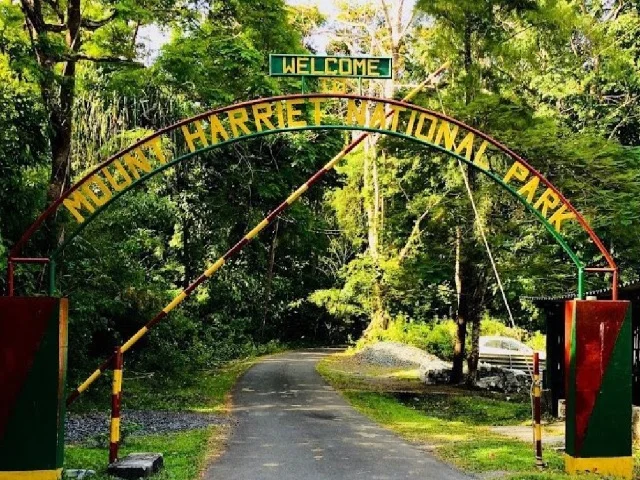
Mount Harriet National Park is a haven for nature lovers, especially during the monsoon season. The park’s dense forests become even more lush and vibrant with the rainfall, and the trails are covered with a blanket of greenery. The monsoon rains transform the landscape into a verdant paradise, perfect for hiking and birdwatching. Visitors can explore the park’s many trails, including the famous Mount Harriet trek, which offers panoramic views of the islands and the sea. While the rain might make the trails slippery, it also adds a cool, refreshing element to the experience. The abundant biodiversity and quieter atmosphere during the monsoon make it a great escape for those seeking peace and connection with nature.
2. Neil Island
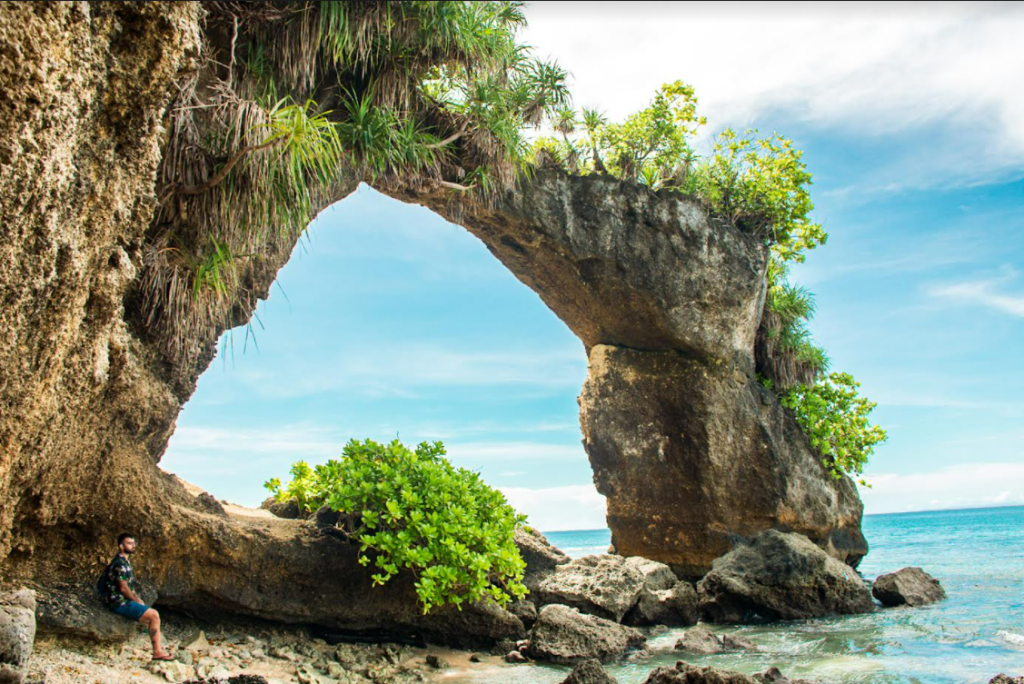
Neil Island is perfect for those seeking serenity and isolation during the monsoon season. The landscape is verdant during the rains. Along with deserted beaches, it provides a quiet feeling. Water sports are not too feasible as the seas are pretty choppy; however, strolls, photography, or sitting by the beach and enjoying the silent cadence of the rain make a great vacation. The monsoon crowns are smaller and allow an individual to sink fully into the serene atmosphere of the island. Monsoons offer an excellent opportunity to see the unique flora and fauna on the island, making it an excellent destination for nature lovers. It is a serene environment away from busy tourist spots.
3. Baratang Island
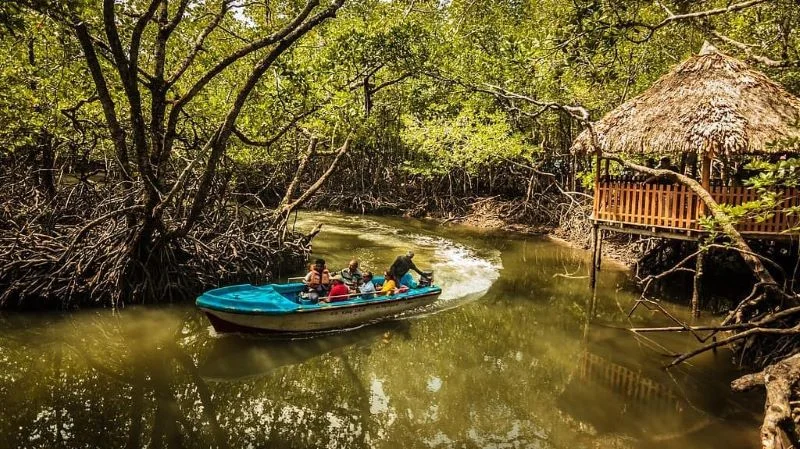
Baratang Island is surely full of natural beauty, including limestone caves and mangrove forests, which are remarkably more beautiful during the monsoon. Rains don’t somehow make things drenched and gloomy but add to the lush greenery that coats the island, thus bringing forests to life. A boat ride through the mangrove creeks to reach the island becomes an exciting adventure, even as it brings more charm to the landscape. The limestone caves-though at times quite damp-are a breathtaking delight in the wonder to view, the stalactites and stalagmites adding to the mystical ambiance; it also brings along fewer tourists so that you can go about exploring the caves and the island in a more peaceful and private atmosphere. Baratang Island takes the option of enjoying the natural beauty of the Andamans far off in the crowd.
4. Havelock Island (Elephant Beach)
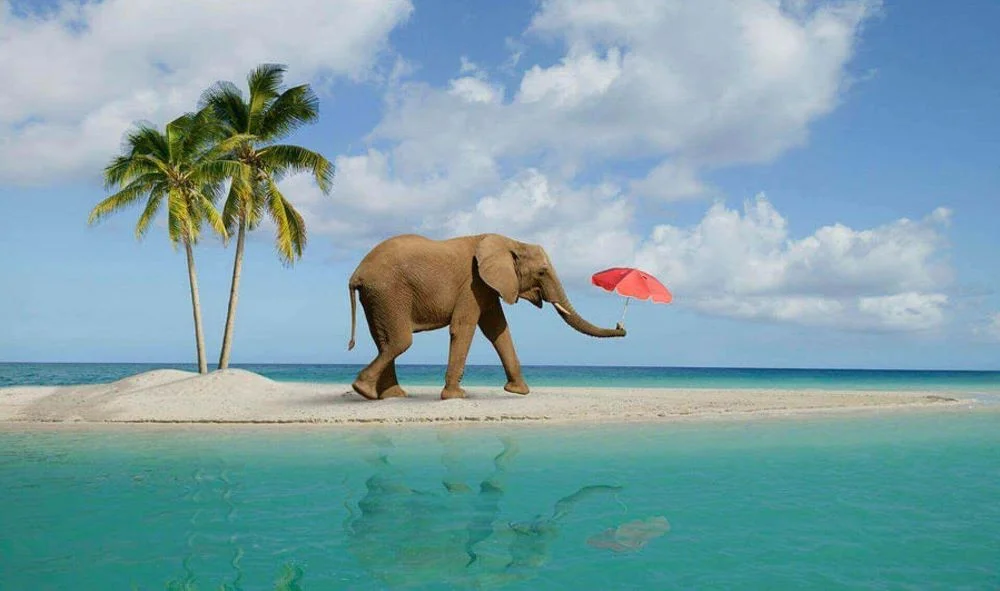
Elephant Beach on Havelock Island remains a popular spot for relaxation, even in the monsoon season. The rains enhance the beauty of the beach, which is surrounded by lush green forests and is perfect for scenic walks and photography. Though the monsoon makes water sports and swimming less ideal due to rough seas, the beach offers a tranquil environment for reading, relaxing, and enjoying the serene surroundings. The lush greenery around the beach becomes even more striking during the rainy season, and the cool atmosphere is perfect for unwinding. Visitors can also explore the nearby forests, which are especially vibrant during this time. The monsoon provides a perfect escape for those seeking solitude and natural beauty.
5. Cinque Island
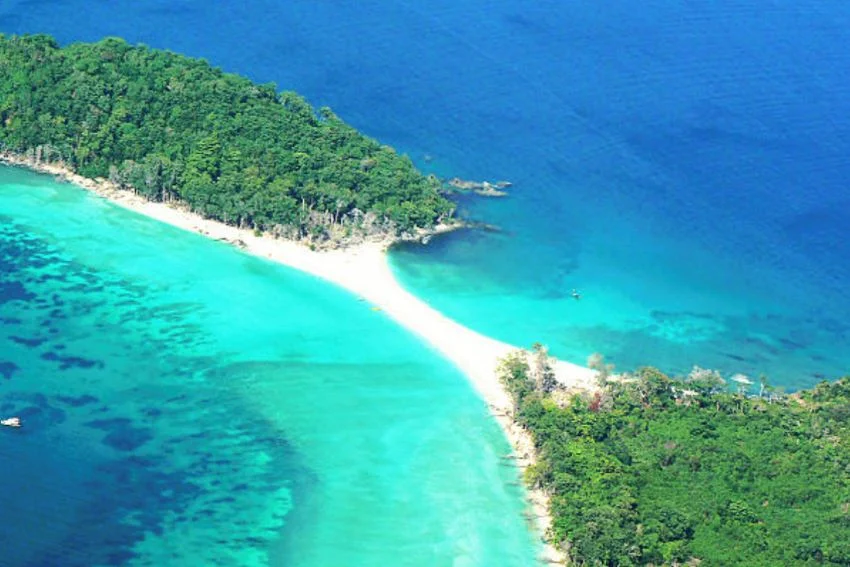
One of the cleanest and prettiest islands in Andaman is Cinque Island during monsoon. The island which once had a lush green forest, pristine white beaches, and clear waters looked much the more beautiful place under the droplets of the rain creating a peaceful and picturesque view. Even though it restricts water activities such as snorkeling or diving, Cinque Island is a great photography place and a nature walk and just enjoying nature. The island is almost uninhabited, and this makes it perfect for a peaceful retreat. The rainfall also contributes to making the island a fabled place for those seeking to connect with nature in all its pristine beauty. The monsoon protects Cinque Island as if it were a well-guarded secret.
What to pack for the Monsoon trip to Andaman and Nicobar?
1. Waterproof Clothing: Pack a lightweight rain jacket or poncho to stay dry during sudden downpours. Consider bringing extra clothes in case they get damp.
2. Quick-Dry Clothing: Opt for breathable, quick-dry fabrics like cotton or nylon to stay comfortable in humid conditions. Avoid heavy fabrics that take too long to dry.
3. Waterproof Footwear: Choose waterproof shoes or sandals for wet conditions, and avoid leather footwear that can get damaged by rain. Comfort and dryness are key.
4. Sunscreen and Mosquito Repellent: Protect your skin from UV rays with sunscreen and avoid mosquito bites by using repellent. Humidity increases the presence of insects.
5. Waterproof Bag or Backpack: A waterproof bag will keep your belongings dry and protect your electronics from moisture. Ziplock bags are also handy for extra protection.
6. Umbrella or Poncho: An umbrella or rain poncho is useful for shielding yourself from rain during unexpected downpours. Make sure it’s easy to carry.
7. Hats and Sunglasses: Bring a hat to shield yourself from the sun and sunglasses to protect your eyes from UV rays. These will keep you comfortable during sunny spells.
Tips for traveling to Andaman and Nicobar in Monsoon
1. Check Weather Conditions Regularly: Before you travel, keep an eye on the weather forecasts. The monsoon can be unpredictable, so staying updated helps you plan your activities accordingly
2. Pack Appropriate Clothing: Bring lightweight, quick-drying clothes, waterproof jackets, and sturdy footwear because the trails can be slippery due to rain. Don’t forget to pack a pair of flip-flops for the beach!
3. Be Prepared for Rain: Plan for potential rain showers by carrying an umbrella or poncho in your bag. It’s also a good idea to have a waterproof bag for your electronics and valuables.
4. Book Flexible Accommodation: Consider booking hotels or resorts that offer flexible cancellation policies. This way, if inclement weather affects your plans, you have the option to change or postpone your stay.
5. Limit Water Activities: Since many water sports may not be safe during monsoon due to rough seas, look for alternative land-based activities like hiking, exploring local markets, or visiting cultural sites.
6. Keep Travel Plans Flexible: Be ready to adjust your itinerary. Ferry services can be delayed or canceled, so aim for a flexible schedule to accommodate any changes in transport.
7. Stay Hydrated: Even though it’s cooler, the humidity can be high. Drink plenty of water to ensure you stay hydrated, especially during outdoor activities.
8. Explore Local Cuisine: Take advantage of the quiet season to explore local restaurants and try regional delicacies. The monsoon can inspire unique culinary experiences.
Conclusion
There is hardly any better time to visit the Andaman and Nicobar Islands than during the monsoons. The islands are laced with green, beaches are much quieter, and landscapes are complete with colors. Well, there might be most of the activities restricted during the rainy season, but a balm of drama and serenity lent by the rain to this fabulous archipelago is unforgettable. With the right stuff packed in, embracing what comes with this weather, one might be able to enjoy the natural beauty of the Andaman Islands in a more intimate yet less crowded setting. The rains reveal a different side to this tropical paradise, close to being mesmerizing.
Here you can also check our Andaman and Nicobar tour packages.
People also ask about Andaman and Nicobar in Monsoon
1. What are the best places to visit in the Andaman and Nicobar in monsoon?
Top spots include Radhanagar Beach, Cellular Jail, Mount Harriet National Park, Baratang Island, and Chidiya Tapu. These places offer lush landscapes and fewer crowds during the monsoon season.
2. Is it safe to travel to the Andaman and Nicobar in monsoon?
While the monsoon brings heavy rain, the islands remain safe for travel. Just ensure that you are prepared for the weather and stay updated on local advisories regarding rough seas.
3. Will the rain affect my flight or ferry to the Andaman Islands?
Flights and ferries might face delays or cancellations due to rough weather conditions. It’s a good idea to check schedules in advance and allow for extra travel time during the monsoon season.
4. Are there fewer tourists during the monsoon?
Yes, the monsoon season sees fewer tourists compared to peak seasons, providing a more peaceful and intimate experience at popular attractions and beaches.
5. Are the roads and infrastructure affected by the monsoon?
While the monsoon can cause occasional disruptions, the basic infrastructure like roads and ferries remains operational. However, some remote areas might experience temporary delays due to heavy rains or flooding.
6. Can I still enjoy trekking and outdoor activities during the monsoon?
Trekking is possible, especially in areas like Mount Harriet National Park, though the trails might be slippery. It’s important to wear appropriate footwear and be cautious while trekking during the rainy season.
